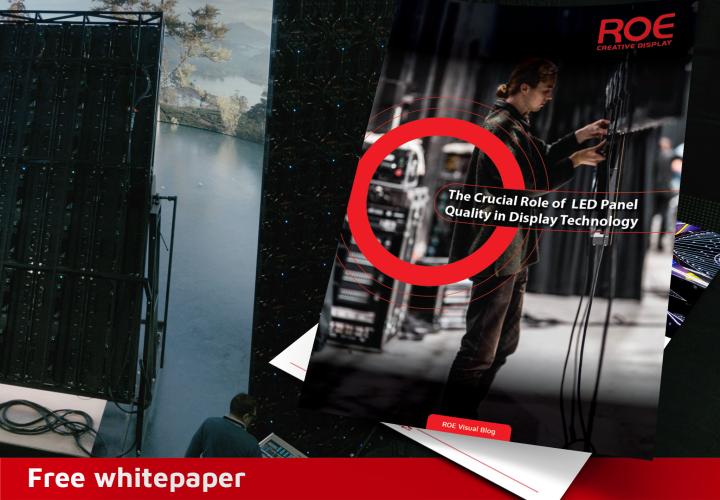
Designing Content for Interactive LED Floors & Walls
You might already know about content design, but creating interactive generative content is a little bit different, requiring some different tools and skills. In this guide we take you through the basic requirements for designing interactive content for the ROE Visual Black Marble floor.
To understand how it works exactly, we first take you on a quick tour around the system before we dive into the ins and outs of creating interactive content including an overview of popular content creation tools that work great with the interactive ROE Visual Black Marble floor.
"The key feature of having 100 sensors per panel is that thousands of sensors can be active at any point in time"
Black Marble Interactive LED Floor
The Black Marble interactive floor comes in two versions, the BM5i and BM4i. The only difference being the size of the panel and pixel pitch. Both LED panels are combined with BrightLogic’s Interactive Touch Sensors which provides a perfect combination of style and interactivity. Both the Black Marble Interactive panels incorporate 100 Optical Sensors per panel, which provides fast and accurate tracking of objects touching the panels, this includes shoes, hands, bodies, but also clothes, drapes, dresses, etc. The TouchController provides touch data in multiple formats, enabling designers and developers to create real-time generative graphics based on the touch data. Keep in mind the Black Marble panels can also be vertically mounted for interactive wall installations.

Content Creation Tools
We tend to separate content creation tools into two categories depending on who are going to create your content: designers or developers. Designers can use the tools they know, such as Notch and TouchDesigner which both offer a visual yet powerful workflow for creating dynamic content (in fact, Notch and TouchDesigner can be used together as well). For developers looking to program their content using tools such as OpenFrameworks, Cinder, Unity, we’ve put together connector libraries for the TouchController and developers can either use the XML API or the NDI Feed from the TouchController.
100 Sensors Per Panel
In order to make the LED panels fully interactive the 100 optical sensors per panel are all IR sensors, they are unaffected by any ambient light or other IR cameras etc., even by direct sunlight. The key feature of having 100 sensors per panel is that thousands of sensors can be active at any point in time and the density of the sensors provides very detailed sensing information within 2.3 inches or 6cm. The TouchController can support 100,000+ active sensors every 33 milliseconds, so for very large events or productions where there are hundreds of people on the stage, every sensor is tracked perfectly and you can be sure the visuals are always perfectly positioned and perfectly synchronized. If you think about every sensor having an XY coordinate on a stage, it’s easy to visualize how the sensors interact with the content.
Fill in your details below to read the full whitepaper.
Related items

LED Processing Software Updates
Our LED processing partners have released three significant software updates, introducing a range of enhancements to Brompton, Megapixel, and iSet. These updates bring several improvements, all aimed at optimising performance and efficiency. Read on to explore the key improvements and their impact on your workflow.

IBC Inspirational Panel Sessions
ROE Visual brought inspiring panel sessions to IBC 2024! Enjoy the recordings of these panel sessions, featuring top industry specialists in XR, virtual production, and live broadcast. The panel sessions include in-depth case studies, such as the BBC UEFA Broadcast Studio, the commercial potential of VP highlighted by "The Garage," broadcast strategies for elections, and insights into the development of the Gran Canaria Film Studio.

The Crucial Role of LED Panel Quality in Display Technology
When it comes to high-quality visual displays, the spotlight often falls on the sophistication of LED processors, but the significance of the LED panel itself should not be underestimated. The intrinsic quality of the LED panel plays a pivotal role in achieving an unparalleled visual experience.

